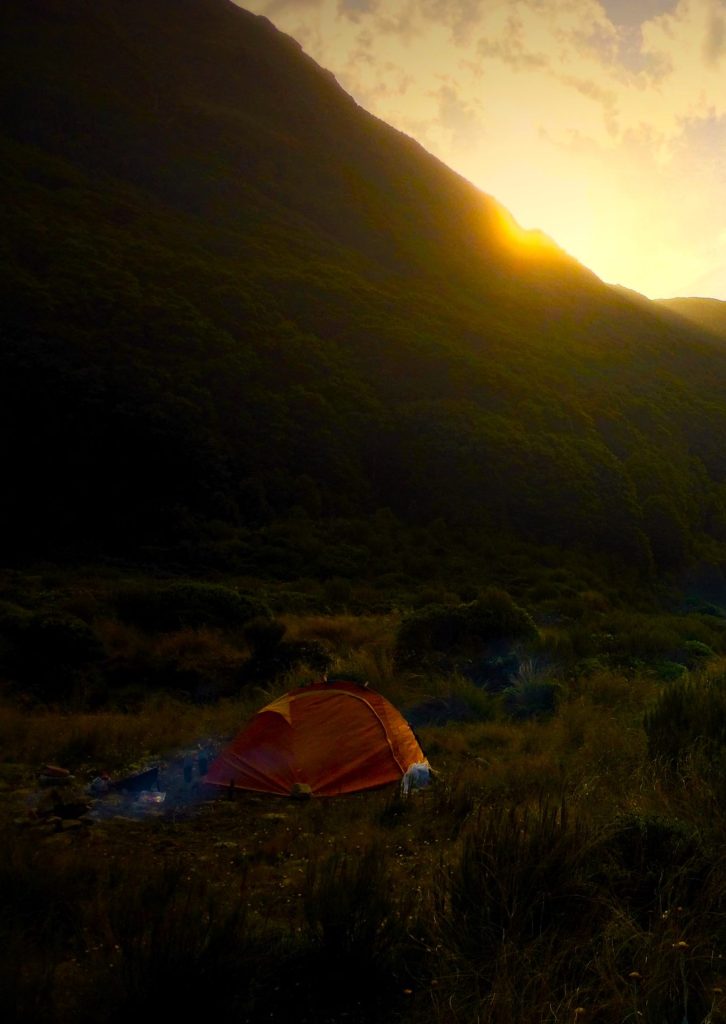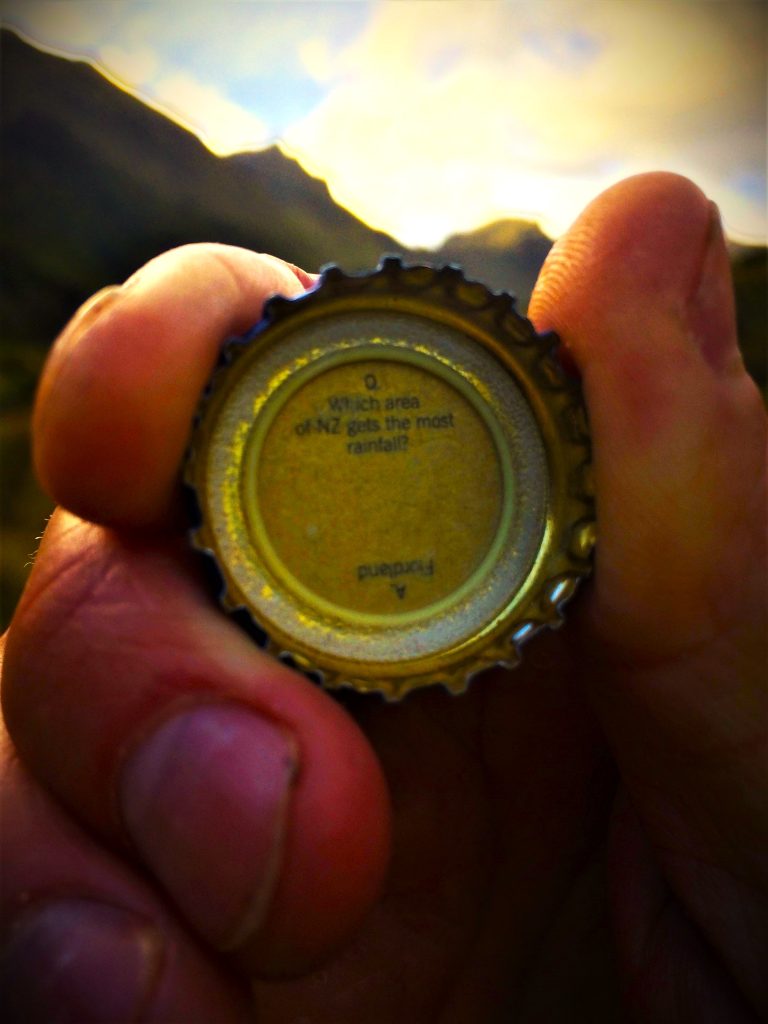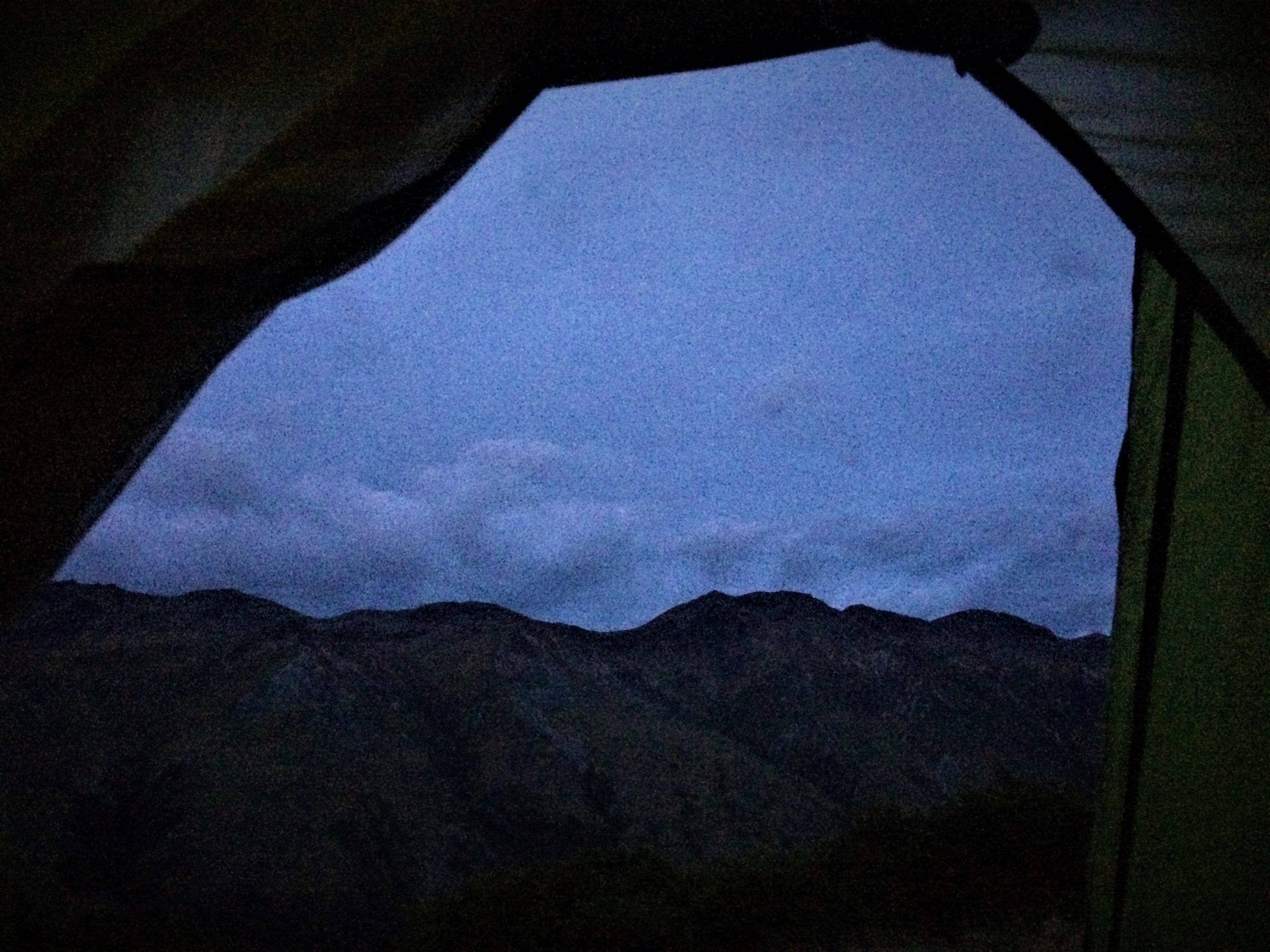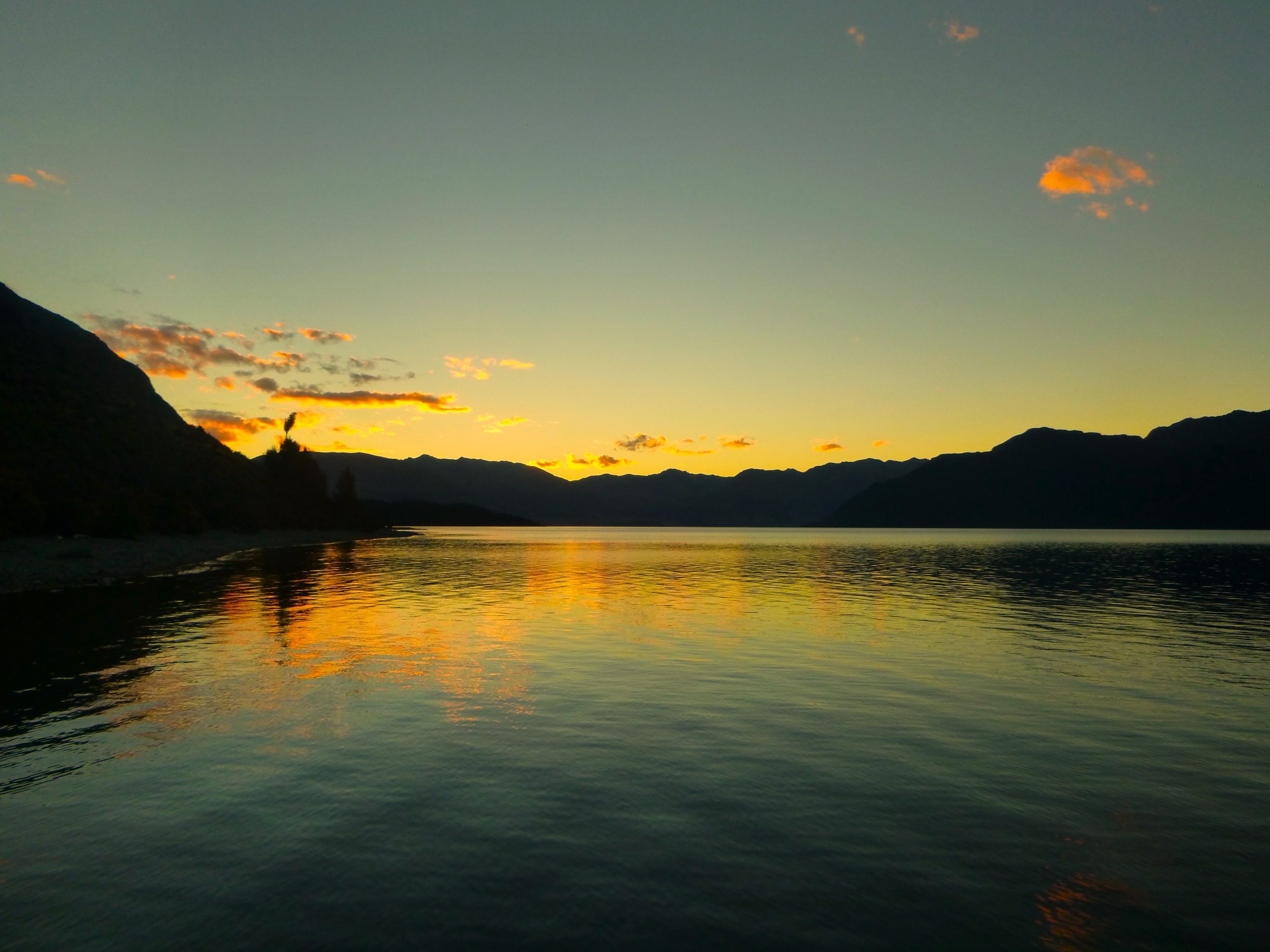“On a Mish” #242 Which Area in Nz Gets the Most Rainfall? (Part One). Camping in the Upper Borland. Fiordland National Park. 29.1.2017. Being prepared for anything is mandatory when traveling throughout Fiordland on foot. Whether it be the terrain or torrents, the place makes it hard for us humans to stay. The rugged land is smashed by storms constantly, giving some parts of the national park annual rainfalls of 7-8 meters plus. While the spectacle of Fiordland rain is a sight to behold, it must be treated with the utmost respect…
With a rare moment of downtime while working as Track Manager on the Humpridge Track I grabbed my gear and drove northwest. I headed to one of my favourite parts of Fiordland (also one of the only places with road access in the entire park), the Borland Road.
I consulted the various weather forecasts available online and it read, ‘rain clearing during the morning’. According to the web I was in for a night without precipitation and that, combined with an adventure in a different part of Fiordland, was exactly what I was after.
After sorting out the constant ongoing Humpridge work so I could disappear for the night, I headed for the Borland Road and no cellphone reception! I parked my van on a side road near the Borland River, and as soon as I got out I was greeted by a very enthusiastic and large sandfly fan club. A positive to a Fiordland Te Namu attack is that it gets you on the move ASAP!
The first part of the hike was an easy stroll following an old track, once used during the construction of the road and now used by hunters looking to push their 4wds as far up the valley as possible. The road petered out near a section of beech forest. It was easy to move through the forest as the floor had been cleaned out by the deer introduced to the area a long time ago, now a huge drawcard for hunters from all over Aotearoa and further.
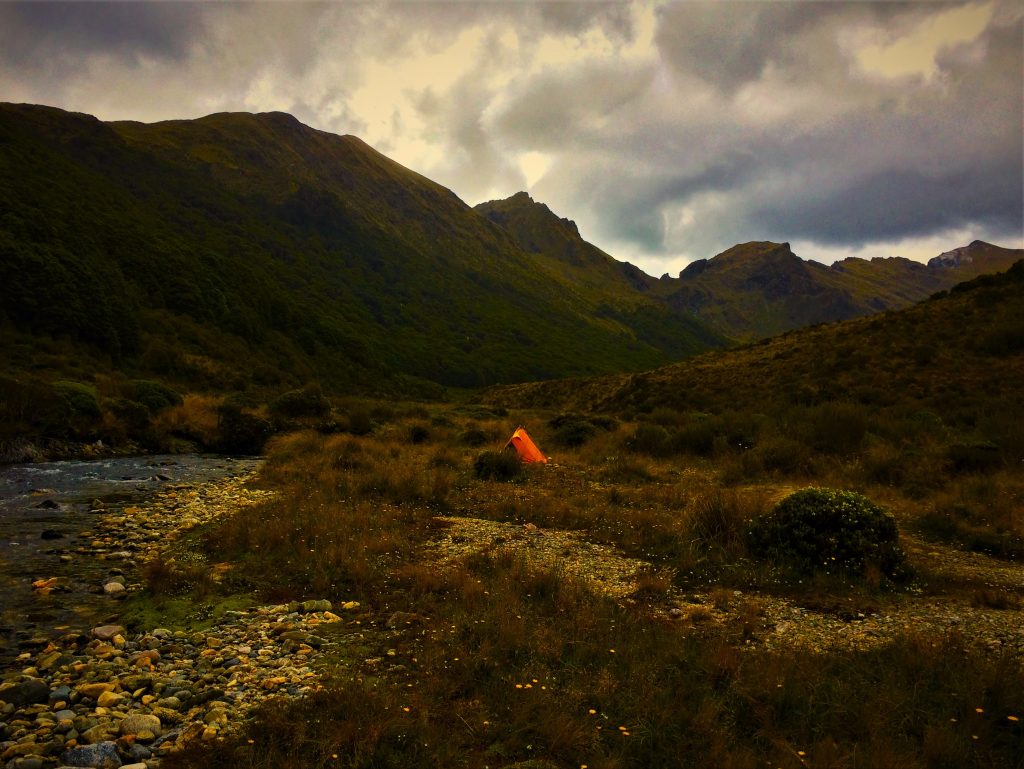
The sun was shining, and I was at play in my favourite playground, everything was going to plan. As much as I love doing my job, knowing I was in a place where the worries of work could wait was a very relaxing thought. With a huge smile I pushed my way into the scrub beyond the beech forest.
My plan was to camp in the Upper Borland Valley and so far, I had got most of the way there. The beautiful hiking beyond the Borland Road ceased after I had passed through a section of beech forest. Nasty scrub said no to easy access. I slowly pushed my way through the foliage which included patches of razor-sharp Spaniard. Like so many times before, open ground was only a short distance away, but to get there I’d have to scrape and scratch my way through to the other side.
Everything seemed to be going to plan. A good campsite was only a short distance away and I was in Fiordland on a mish. I’m sure nothing could dampen my mood…
